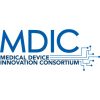The global medical device industry is growing rapidly and poised for steady growth. According to the Facts and Factors market research report, the global medical devices market size and share revenue is expected to expand from $471 billion (2020) to $623 billion by 2026, with a 5% CAGR growth rate during the forecast period of 2021–2026. The opportunity to serve patient needs through innovation and emerging technologies also brings challenges for device manufacturers to keep pace. The competitive medtech market requires a strategic focus on product quality while serving market needs. In addition, the industry faces challenges that slow manufacturers down. Not focusing on them could lead to patient safety issues or ultimately recalls and field corrective actions. Such challenges are not limited to evolving regulatory requirements but also involve product development and integrating suppliers into the development process. A callous approach towards process development to maintain a consistent product manufacturing process and managing supplier quality could have a long-term impact on a company. In addition, the digitization of medical devices brings additional security considerations due to the risk of patient data being hacked or risks introduced as a result of a compromised device.
First, medical device manufacturers need to properly execute a long-term sustainable strategy to overcome these barriers. Second, it is essential to identify the appropriate governmental regulatory requirements and internationally recognized product standards such as ISO 13485 and ISO14971. Third, product development planning must involve identifying key stakeholders early in the process and defining strategies from ideation to launch. And fourth, early engagement with suppliers during product development is key to success in preventing manufacturing issues down the road. Moreover, well-defined process characterization, supplier quality qualification, and risk stratification strengthen the quality of a medical device. Overcoming the compliance challenges could prevent costly actions in the future while maintaining medical device safety standards.
The medical device manufacturing industry is tasked with meeting the volume needed to serve a large patient population. Manufacturing medical devices require dynamic processes and control; however, the industry struggles with various unknowns that impact them from an efficiency standpoint, quality impact, and thus financially. Let’s review some of the challenges currently present in the industry and how to overcome them.
1. Complex Regulatory Requirements
Every medical device manufacturer must follow government regulations or guidelines to sell its product. However, it can be difficult for some manufacturers to keep up with changes in regulations as well as understand the complexity of some requirements. One of the most recent dramatic changes occurred in Europe with the EU Medical Device Regulations (EU MDR).
A manufacturer must meet the respective regulations of the country in which it is planning to market its product. Although some regulations may overlap globally, a separate submission is mandatory for a country’s approval. In addition, manufacturers are required to report adverse events to the respective regulatory body—i.e., As part of postmarket surveillance, FDA requires Medical Device Reporting; EU MDR requires vigilance reporting. The Medical Device Single Audit Program (MDSAP) streamlines the auditing process for manufacturers so they do not need to go through multiple audits to satisfy the requirements of various regulatory jurisdictions. Currently five countries participate in this program: Australia, Brazil, Canada, Japan and the United States.
Defining the regulatory as well as quality strategy is essential to ensure requirements are considered and understood early enough to prevent any impact on device production. Manufacturers can face delays in regulatory approvals due to incomplete submissions, whether its due to a missed requirement or a misinterpretation of the requirements.
2. Product Development and Supplier Involvement
New product development is the backbone of an organization. The research and development of a product takes time and thus requires a deeper focus from concept to realization. For companies, that means long lead times and therefore higher costs. Understanding customer needs and translating those into technical requirements is the first critical step. With a requirements matrix, stakeholders need to ensure that the user requirements are adequately defined, practical and include strategies to implement and meet the patient’s needs.
The supplier also plays a pivotal role in providing the components and subassemblies for the finished device. Involving your supplier early in the development process promotes a quality and reliable product. Design for manufacturability is equally important while designing the product.
3. Process Development
The quality management system per FDA 21 CFR 820.90 and ISO13485 requires manufacturers to set up procedures for identifying, evaluating, documenting and disposition of the non-conforming product. The guidelines also ask to identify and investigate the root cause of the issue diligently. Control of the non-conforming product is a must; however, if the process is not developed correctly from the beginning, a manufacturer will need to pay close attention to the non-conforming process and its outcomes due to several nonconformances. The biggest challenge that a manufacturer faces while manufacturing a medical device is ensuring production quality of the product. There is no doubt that if a process doesn’t fully characterize, it could be an obstacle in day-to-day production and require holding many subassemblies or finished medical devices ready to be shipped to customers until resolved.
The focus has shifted from building quality into the design to controlling quality at the production level. This methodology increases the risk of making mistakes and more significant potential for quality escapes. Quality escape could result in recalls and field corrective action. Nonetheless, a robust new product introduction in the market desires proper production planning and execution.
4. Intricate Supplier Issues
Suppliers are an integral part of an organization, and it is essential to keep a good relationship between the supplier and the customer to ensure success. An ideal situation ensures that the supply chain process is intact, providing a quality product and less wastage of material. Regardless, most organizations suffer from the nuances of the supply chain. The medical device industry is no different and there are many challenges a manufacturer comes across. The first challenge is the change control: A customer sometimes forgets to establish proper change control procedures with the supplier. As a result, when a supplier makes a change either in the process, raw material or inspection without approval from the customer, it triggers non-compliance, and more importantly, this can create a patient safety impact. On the other side, if a customer establishes a change control requiring the supplier to obtain approval for every change before implementation, it could cause an abundance of differences to the process. Some changes could have negligible to no impact. Thus, a balance between appropriate change control processes is necessary to ensure an efficient operation without impacting the quality and serving customers.
Another important aspect is the risk-based analysis of suppliers. Supplier risk stratification determines understanding where the more significant risk lies. An example would be deciding which supplier has a more substantial impact on the supply chain due to patient safety or supply risk. Categorization of suppliers helps manage the resources and monitor the risk. Lastly, a supplier’s quality system plays a crucial role in managing the production quality of the component or subassembly when they manufacture them. Sometimes a medical device manufacturer implements its own quality system at a supplier, given the nature of criticality.
5. Cybersecurity
Digitization, the Internet of things (IoT), and artificial intelligence has changed the face of the industry. Technology advancements have enabled self-monitoring, diagnosis, and increased integration and communication between the patients and physicians. With these advancements, there is a need for security. Medical devices collect, store and exchange information between different platforms. A growing number of them is operating on software, which is vulnerable to technical glitches and may expose devices to potential security breaches. Hackers can access medical devices and manipulate them. Such issues have adverse effects on product quality and thus jeopardize patient safety.
There is an utmost need to proactively monitor product field performance for software breaches. Manufacturers should carefully consider cybersecurity as part of product development requirements and define what needs to be done to ensure patient safety and neutralize risks involved—potentially utilizing secure channels to communicate and cloud-based storage. Per the FDA guidance, manufacturers must meet pre- and post-market cybersecurity guidelines and address any security concerns before launch.







